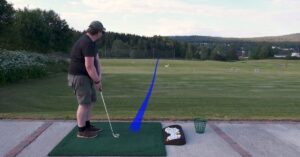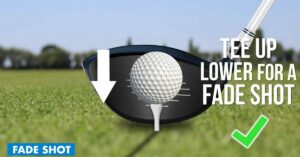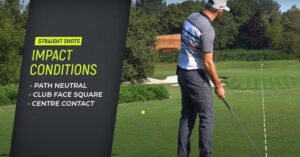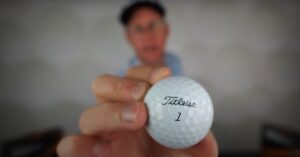What Is The Leading Edge Of A Golf Club?
Golf is a sport that requires precision and finesse, and one of the key elements in achieving the perfect swing is understanding the leading edge of a golf club. You may have heard this term before, but what exactly does it mean?
Well, simply put, the leading edge refers to the front part of the clubface that makes contact with the ball. It plays a crucial role in determining how the ball will react upon impact.
In this article, we’ll explore why some players prefer a sharper leading edge for better control, while others opt for a more rounded one to maximize forgiveness. So if you’re curious about improving your game or just want to expand your knowledge about golf equipment, keep reading!
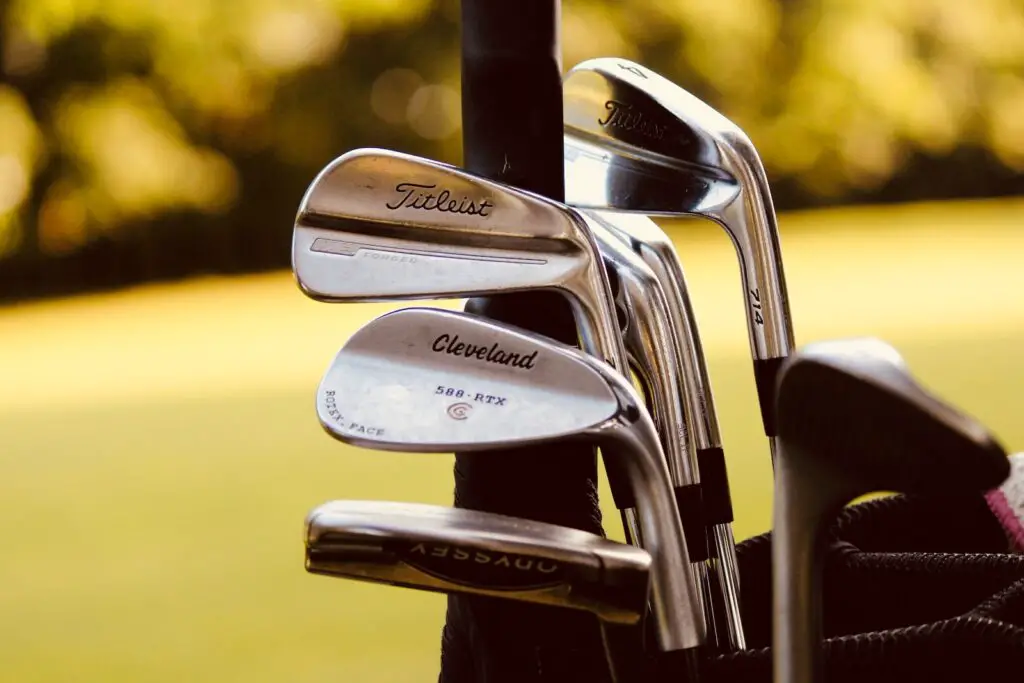
Key Takeaways
- The leading edge of a golf club is the part that makes first contact with the ball, crucial for accuracy and distance.
- It plays a significant role in determining the trajectory and spin of the shot, impacting overall control.
- Properly maintaining and sharpening the leading edge enhances performance by ensuring clean strikes and reduced drag.
- Understanding how to position and utilize this key area can greatly improve your game, making it essential knowledge for any golfer.
How Does the Leading Edge of a Golf Club Affect Your Swing?
The leading edge of a golf club plays a crucial role in determining the outcome of your swing. It directly impacts how the club interacts with the ball at impact, which ultimately affects your shot accuracy and distance.
To better understand this concept, let’s take a closer look at how different types of leading edges can influence your swing:
Rounded leading edge
Clubs with rounded leading edges are typically more forgiving and easier to hit for beginners or players with slower swing speeds. The curved design helps glide through the turf smoothly, reducing the chances of digging into the ground.
Sharper leading edge
On the other hand, clubs with sharper leading edges provide more versatility and control for experienced players who want to manipulate their shots. The sharper edge allows them to dig into the turf slightly, enabling better ball compression and spin generation.
Square leading edge
Square leading edges offer a balanced approach between forgiveness and control. They work well for most golfers by providing decent turf interaction without sacrificing too much forgiveness or shot-shaping capabilities.
It’s important to note that personal preference also plays a significant role in selecting the right type of leading edge for your swing style. Experimenting with different designs during practice sessions can help you identify what works best for you.
What Are the Different Types of Leading Edges on Golf Clubs?
When it comes to golf clubs, the leading edge plays a crucial role in determining how the club interacts with the turf and ultimately affects your shot. There are several different types of leading edges that golf clubs can have, each designed to suit specific playing conditions and player preferences.
Blunt Leading Edge
This type of leading edge is rounded and smooth, offering forgiveness and preventing digging into the ground. It works well for players who tend to take divots or play on softer turf conditions.
Sharp Leading Edge
A sharp leading edge is more angular and precise, allowing for better control and accuracy when hitting shots off tight lies or firm surfaces. It helps skilled players make clean contact with the ball without excessive bounce.
Rolled Leading Edge
The rolled leading edge has a slight curvature that aids in reducing friction between the clubhead and the ground during impact. This design promotes smoother interaction with various turf conditions, making it versatile for different playing environments.
Beveled Leading Edge
A beveled leading edge features a small angle or slope towards the back of the clubface. This design minimizes resistance when striking through thick grass or rough areas by reducing drag on impact.
Why Is the Leading Edge Important for Distance and Accuracy in Golf?
The leading edge of a golf club plays a crucial role in determining both distance and accuracy on the golf course.
When you strike the ball with the leading edge, it is responsible for initiating contact and transferring energy to propel the ball forward. By understanding why the leading edge is important, you can enhance your game and achieve better results.
To delve into this topic further, let’s explore three key reasons why the leading edge is vital for distance and accuracy in golf:
Ball Compression
The leading edge helps compress the ball against the ground upon impact. This compression increases energy transfer from your swing to the ball, resulting in greater distance.
It allows you to achieve optimal launch conditions by ensuring that maximum force is applied to propel the ball forward efficiently.
Avoiding Mis-hits
When striking a golf shot, hitting slightly behind or ahead of the ball can lead to undesirable outcomes such as fat shots or thin shots.
The design of the leading edge aids in minimizing these mis-hits by creating an ideal contact point with minimal turf interaction.
This reduces unwanted vibrations and provides more control over where your shot lands.
Clean Contact
A clean strike on the sweet spot of a clubface promotes accuracy by reducing unwanted sidespin or backspin on the ball.
The precise curvature of a well-designed leading edge helps ensure that you make solid contact with consistent loft at impact, allowing for straighter shots towards your intended target.
How Can You Properly Maintain and Sharpen the Leading Edge of Your Golf Clubs?
To maintain and sharpen the leading edge of your golf clubs, there are a few key steps you can follow.
- Cleanliness is Key: After each round, give your clubs a good cleaning. Use a brush to remove dirt and grass from the grooves. A toothpick works wonders for those stubborn bits.
- Groove Maintenance: The grooves on your clubface are crucial for spin and control. Regularly check and clean them. If you notice any dings or damage, it might be time to consult a pro for repairs.
- Soapy Soak: Fill a bucket with warm, soapy water. Let your clubs soak for a bit, and then scrub them with a soft brush. Pay extra attention to the grooves.
- Dry and Shine: After their bath, make sure your clubs are thoroughly dried. A towel works fine, but an air compressor is even better for getting into all the nooks and crannies. Shine those babies up!
- Store with Care: Keep your clubs in a cool, dry place. Avoid leaving them in the trunk of your car, especially on hot days. Extreme temperatures can mess with the glue that holds the clubhead to the shaft.
FAQs
What is the purpose of the leading edge of a golf club?
The leading edge of a golf club is designed to make initial contact with the ball during a swing. It helps to lift the ball off the ground and start it on its intended trajectory.
How does the shape of the leading edge affect performance?
The shape of the leading edge can greatly impact how easily a golfer can strike the ball cleanly. A rounded leading edge tends to glide smoothly through turf, while a sharper leading edge may dig into grass or soil more easily.
Can adjustments be made to alter the characteristics of the leading edge?
Yes, some golf clubs have adjustable features that allow players to modify aspects like loft and bounce, which can indirectly influence the characteristics of the leading edge. However, altering these settings should be done carefully as it can affect overall performance.
Is there any maintenance required for proper upkeep of a golf club’s leading edge?
Regular cleaning and inspection are essential for maintaining optimal performance from a golf club’s leading edge. Removing dirt, debris, and grass clippings after each use will help prevent buildup that could potentially affect contact with the ball during swings.


